Hey there, foodie friends and health junkies! Are you ready to whisk off on a mouthwatering adventure to the land of pizza, pasta, and…vegetarian Italian food delights?
Yep, you heard right. We’re heading to Italy, but not for the meat-laden lasagnas or cheese-stuffed calzones you might be picturing. Buckle up because we’re about to explore the less-traveled path of Italian food – vegetarian and vegan style!
Let’s get something straight – Every Italian recipe isn’t packed with beef meatballs and Parmesan. (But even if they are, replacing the beef with vegan meatballs is as easy as it gets!) Far from it!
Italian vegetarian recipes are like a garden of Eden for veggie lovers with sun-kissed sundried tomatoes, aromatic basil, hearty beans, and grains – all playing starring roles in traditional dishes with tender noodles and perfectly crisp crusty bread.
Italian dinner cuisine has your back if you’re a vegan, vegetarian, or just a fan of darn good food! In this blog post, we’ll dive headfirst into the colorful, flavor-packed world of vegetarian and vegan Italian recipes.
Trust me, it’s a journey where tradition meets dietary choices without compromising the yum factor!
Whether you’re a die-hard vegan, a proud vegetarian, or just a curious foodie needing a little variety, delicious vegetarian and vegan Italian recipes are waiting for you (so you won’t get stuck with neverending pasta salad all night!).
Let’s get this gastronomic party started!
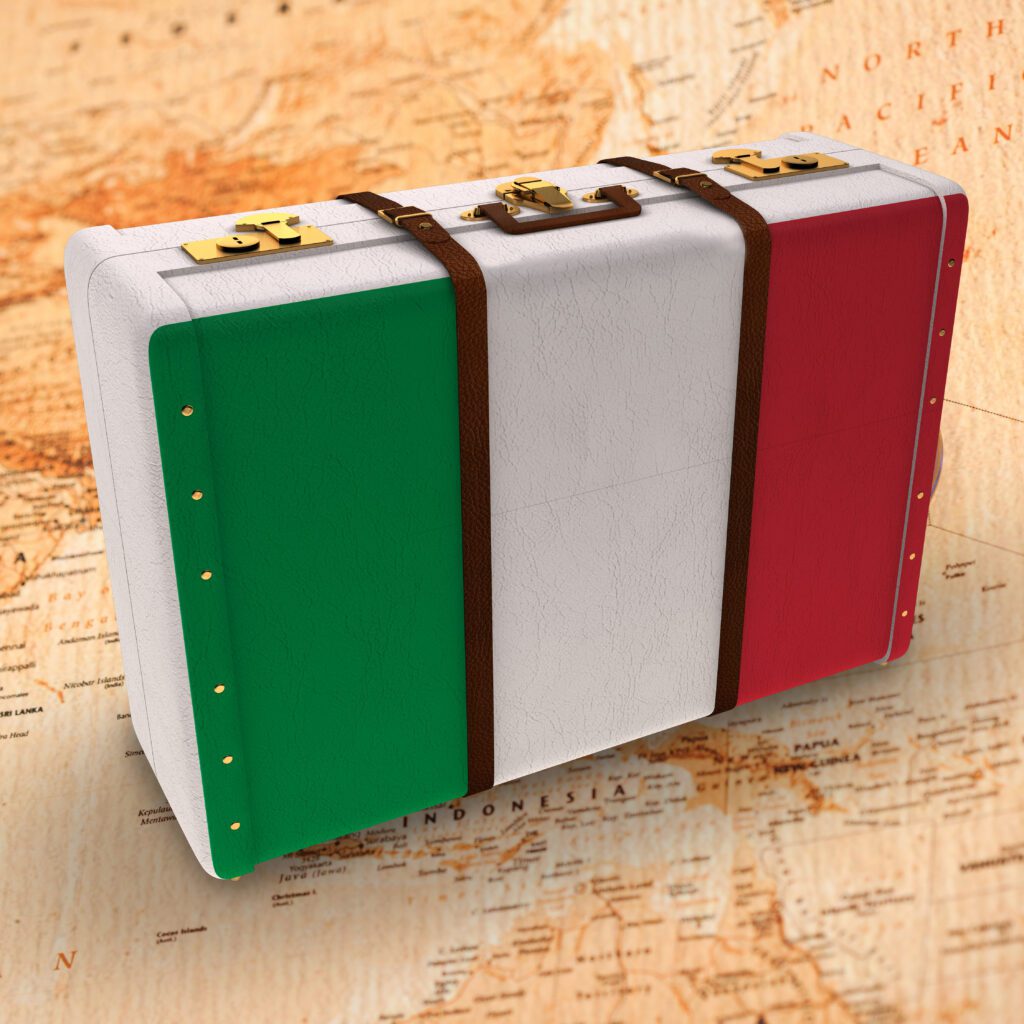
Section 1: Embarking on an Italian Vegan and Vegetarian Food Adventure
Ever noticed the world’s getting a little greener? No, I’m not talking about saving the planet (though that’s pretty rad, too).
I’m talking about this epic surge of folks taking the plunge into plant-powered diets. Leading this veggie charge are vegan and vegetarian meals.
But what’s the lowdown here? What’s with the health benefits? And are there any myths we need to bust? Let’s jump in!
The Essentials
Before we dig in, let’s get our terms in order. What’s a vegetarian diet, and how does it differ from veganism?

Vegetarian
Consider vegetarianism as a diet where meat, poultry, and fish are off the table. But don’t worry, vegetarians aren’t totally left out. They can still indulge in dairy products and eggs. (If they want to!) And within this group, you’ve got subgroups like Lacto-vegetarians (dairy yes, eggs no), Ovo-vegetarians (eggs yes, dairy no), and lacto-ovo vegetarians (they’re game for both eggs and dairy but won’t be caught red-handed with anything that once had a heartbeat).

Vegan
Veganism, meanwhile, is more than just a diet—it’s a way of life. Vegans say “nope” to all animal products and by-products. So, no meat, fish, dairy, eggs, honey, or even gelatin. Plus, many vegans extend this to other areas of their lives, avoiding things like animal-tested products or animal-derived materials in stuff like clothes and makeup.
Instead of animal-derived proteins, vegans rely on plant-based sources like soybeans, legumes, nuts, quinoa, and tempeh. As veganism grows in popularity (yes!), so does the range of delicious meat substitutes that make creating vegan-friendly dishes easier than ever.

Health Benefits
Vegetarian and vegan recipes come with a delicious side dish of health bonuses. The American Dietetic Association gives them the green light, saying they’re nutritionally sound and can help prevent and treat certain diseases.
These diets can potentially lower your risk of heart disease, high blood pressure, type 2 diabetes, and cancer. Plus, they can help manage your cholesterol levels and weight. But remember, it’s not a magic potion. You’ve got to balance your diet with plenty of fruits, veggies, whole grains, and plant-based proteins.

Myth Busting
Despite more people jumping on the vegan and vegetarian bandwagon, some myths are still swirling around.
Myth 1: “Veggies don’t have enough protein for a human to sustain themselves!”
One biggie is that you can’t get enough protein from a plant-based diet. But guess what? Many plant foods like lentils, beans, and tofu pack some serious protein.
So, the protein is there; you just have to seek out more than mixed green salads to find them!
Myth 2: “Vegetarians are automatically healthy!”
Another myth is that these diets automatically equal good health. While they can offer health benefits, you can still eat junk and avoid animal products. A diet loaded with processed vegan or vegetarian foods can still lead to poor health.
Getting the hang of vegan and vegetarian diets is your first step towards making better food choices.
Myth 3: “Vegan and vegetarian diets are boring!”
This simply isn’t true! You can create delicious, flavourful meals with an abundance of vegan-friendly ingredients. Think roasted peppers, olives, capers, sundried tomatoes, pumpkin puree, and nuts for adding texture and flavor to your dishes. Plus, you can use plant-based dairy substitutes like vegan cheese and cream when recreating classic Italian recipes. Bon Appetit!
Myth 4: “Vegan and vegetarian diets are expensive!”
The truth is vegan and vegetarian diets can be very cost-effective! Just like any other diet, you can adjust your spending according to the ingredients you use. For example, opting for various seasonal vegetables, nuts, and legumes will keep costs down while still providing plenty of nutrition. You may even save money in the long run by avoiding the pricier cuts of meat. So, don’t let the myths scare you off—vegan and vegetarian recipes are budget-friendly and delicious!

Keeping Costs Down and Nutrients Up – A Guide to Budget-Friendly Veggie Italian Cooking
In the ever-rising 2023 grocery market, saving money on fresh fruits and veggies while maintaining the nutrient content can seem daunting. But fear not, my fellow lovers of vegetarian food! With some creativity and handy tips, you can enjoy all your favorite Italian vegetarian recipes without breaking the bank.
One creative way to save money is by making daily trips to your local market (maybe on your way home from work). Keep an eye out for fresh vegetables on clearance racks. Not only will you rescue perfectly good produce from ending up in a dumpster, but these veggies are also ripe and ready for cooking that very evening. Imagine the burst of flavor they could add to your vegan mushroom pasta!
Let’s take a look at how you can incorporate this tip into creating the best vegan Italian recipes for the whole family:
Olive Oil and Rich Tomato Sauce: These are the backbone of many traditional Italian dishes. Buying in bulk can save you money on olive oil. If you see a good deal on tomatoes, you can make a basic marinara and freeze it in meal-sized portions for the perfect starter to a variety of Italian vegetarian recipes. These ingredients have a long shelf life (as long as you don’t forget to put the sauce in the freezer!).
Cherry Tomatoes and Roasted Butternut Squash: When in season, these can often be found on clearance racks. They add color and nutritional value to any Italian recipe. Be it a vegan lasagna or a simple Caprese salad, these two ingredients can be very versatile.
Bread and Pasta Dishes: Bread nearing its sell-by date is often discounted. Pair it with a simple recipe like spaghetti aglio or vegan carbonara loaded with veggies from the clearance rack for a budget-friendly meal. Pasta can be found on sale for just pennies per serving when bought in larger quantities.
Fresh Herbs: Make your marinara sauce using discounted tomatoes. Fresh herbs like basil can often be found on clearance racks and add a punch of flavor to any dish. For a small investment, you can buy a dehydrator and make your own herb mix that will last for months.
Butternut Squash: Use ripe butternut squash from the clearance rack to make a creamy vegan risotto. Add vegan cheese for extra creaminess and caramelized onions for sweetness. You can even throw the leftover risotto in breading and toss it in a fryer for a killer Arancini, a family favorite around my house!
Pasta Salad: Clearance veggies are perfect for pasta salad. Just toss them with some leftover pasta and oil for a light lunch or dinner.
Vegan Butter: Butter substitutes that actually taste (and feel) like butter can be pricey, so look out for sales and discounts. Real butter, or a great knockoff, is essential for achieving that delicious classic Italian flavor. Buy on sale and freeze it for later use.
Eggplant: Use ripe eggplants and tomatoes from the clearance rack to whip up Pasta alla Norma.
Caprese Salad: Perfectly ripe tomatoes are the only way to do it for this favorite. Pick them up at your local market for a fraction of the price. Opt for vegan mozzarella to make this classic Italian dish vegan-friendly.
Arugula: Arugula is a great way to add some green to your plate. It’s loaded with vitamins and minerals, so buy it fresh from the grocery store and enjoy!
Coconut Cream: Coconut cream can actually be a cheaper (and sweeter!) alternative to dairy cream and is excellent for creating a creamy texture in dishes like vegan risotto.
Remember, the key to enjoying delicious Italian vegetarian recipes on a budget is flexibility and creativity. Substitute ingredients based on personal choices, what’s discounted, or what’s in season. You might just discover your new favorite recipe!
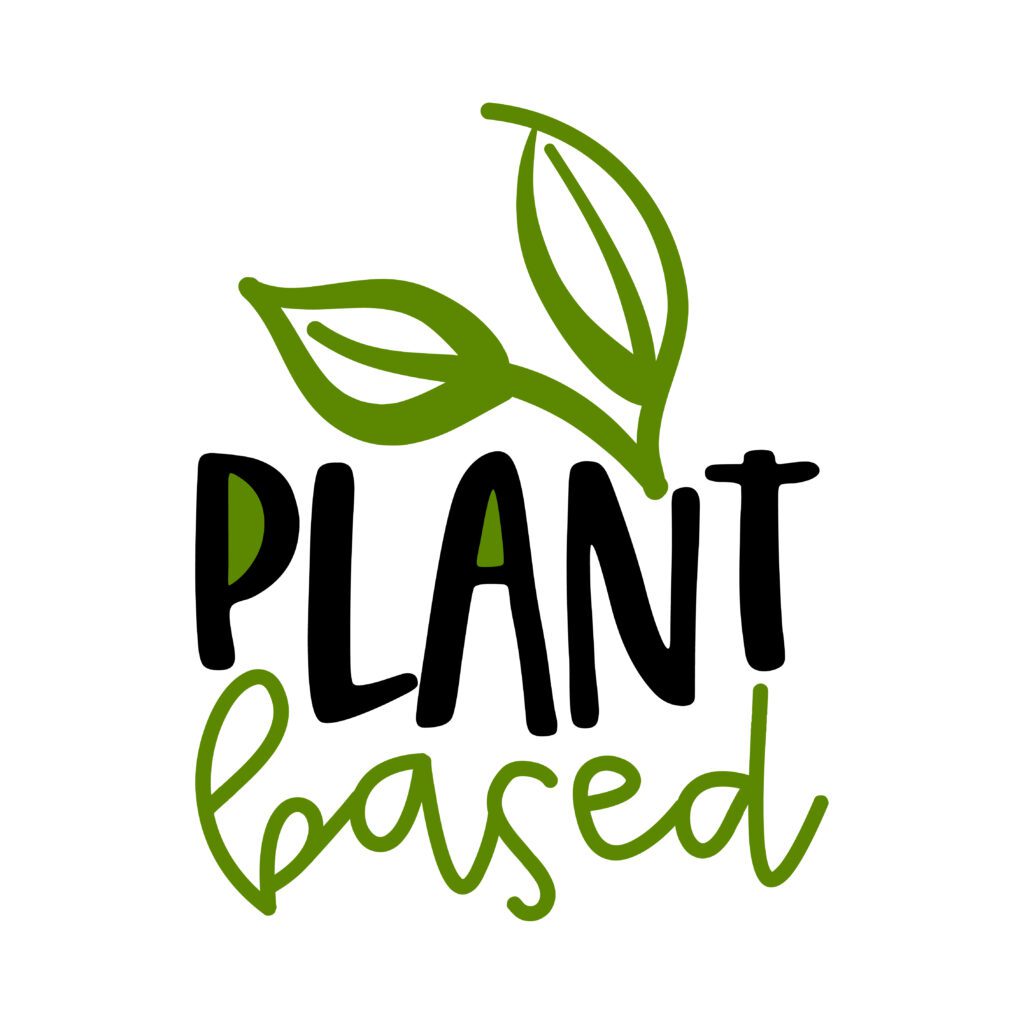
Section 2: The Italian Kitchen – A Foodie’s Playground for Plant-Based Diets
Ever thought about Italian meals? I mean, really thought about them?
Sure, you’ve got the usual suspects – the pasta, the pizza, the oh-so-tempting tiramisu. But Italian fare is like a neverending buffet of flavors beyond the tried-and-true classics.
And guess what? It’s also a paradise for plant-based diets! (But, if you live gluten-free, that can be a bit trickier!) Let’s dig in and see what makes Italian cuisine a vegan and vegetarian playground.

The Lowdown on Vegetarian and Vegan Italian Fare
Italian traditional food is like a grand old tapestry, each thread representing a different region, each color a different flavor. From the seafood-rich dishes by the coast (a perfect traditional Italian dish for pescatarians!) to the hearty meats and cheese up north – it’s a culinary adventure waiting to be explored.
But here’s the secret sauce – the heart of Italian cooking is simplicity and the quality of ingredients. This makes it flexible and ready to embrace diets of all types, including our beloved vegan and vegetarian diets.

Beyond the Pizza Box
Pasta and pizza might be the poster children of the Italian main dish, but there’s a whole world of deliciousness waiting to be discovered. Think belly-warming soups, colorful salads, creamy risottos, and veggie-packed dishes that’ll make you say, “Mamma mia!”
Take ‘Ribollita,’ for example. This Tuscan soup made with bread and veggies is comfort food at its finest. Some may say it’s the perfect dish! I mean, come on! They put bread IN THE SOUP!
Or ‘Caponata,’ a Sicilian eggplant dish that’s as delicious to eat as it is fun to say.
And let’s not forget ‘Polenta,’ a versatile cornmeal dish from Northern Italy that can be served creamy, fried, or baked. There are so many options!
These dishes are just a taste of the variety and adaptability of Italian flavors, making them a top choice for those on plant-based diets.

A Cornucopia of Plant-Based Ingredients
Italy’s staples include a treasure trove of plant-based ingredients. We’re talking tomatoes, red onions, colorful peppers, zucchini, eggplants, and artichokes, which are the stars of many dishes. And let’s not forget the legumes – chickpeas, lentils, and beans that add a hearty touch to meals!
And grains? Oh boy, there’s more than just wheat for pasta. There’s rice for risotto, chickpea flour forfarinata (savory pancakes made with chickpea flour and Italian seasoning that are naturally gluten-free!), spelt for hearty, protein-packed soups, and corn for polenta.
Nuts and seeds add that much-needed crunch, while herbs like basil, parsley, and oregano take the flavor to new heights!
With all these plant-based ingredients, you can make vegan Italian meals a cornerstone of your plant-based diet.

What About the Fruit?
From citrus fruits in the south to apples and berries up north, Italians know how to make fruit shine, whether it’s in desserts, salads, or even savory dishes. Take ‘Macedonia de frutas,’ a fruit salad made with sugar and lemon juice served as an after-dinner treat. Or ‘Torta di Mele‘ – apple cake with no spices (despite popular belief). Instead, freshly squeezed lemon juice and lemon zest add the perfect balance of flavors.
So, here’s the deal. Italian favorites aren’t just flexible; they showcase the variety and versatility of plant-based ingredients. Its focus on quality and simple preparation lets these ingredients steal the show, resulting in meals that taste great and do good for your body, leaving you energized and ready to take on the world!
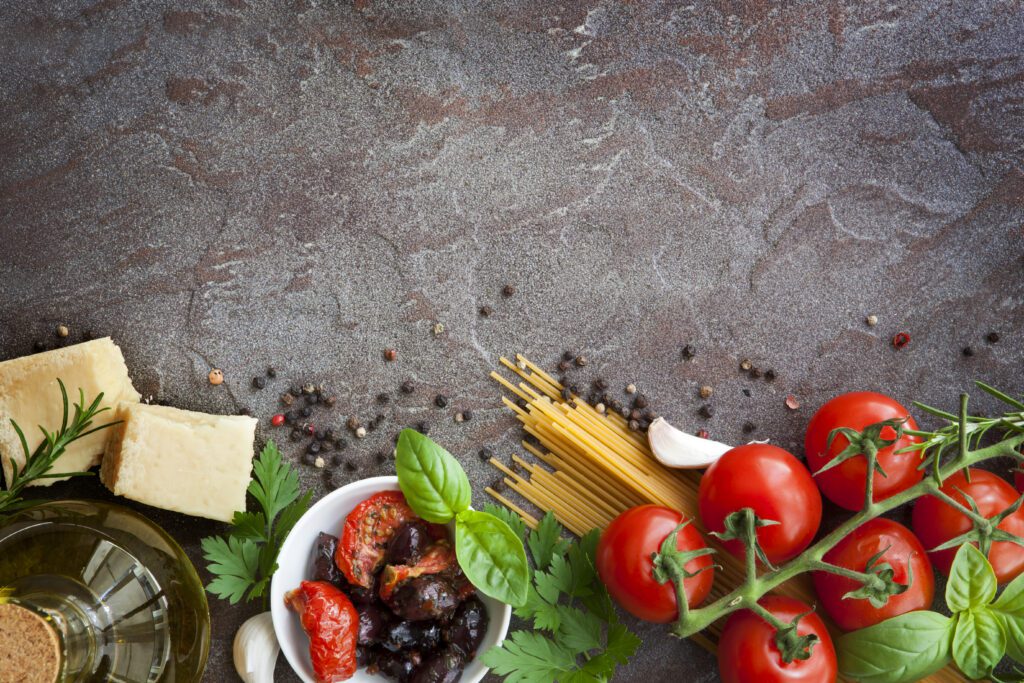
Section 3: Italian Classics for the Veggie Lovers
Italian fare, my friends, is a treasure chest of flavors waiting to be explored. It’s for more than just those who love meatballs with fresh grated parmesan cheese piled so high you assume the waiter will need a new cheese block. Nope, it’s got a whole lot of love for our vegan and vegetarian buddies, too.
So, grab your apron, and let’s dive into some of the most drool-worthy Italian vegetarian recipes and vegan Italian recipes the cuisine offers.

Minestrone: The Big Soup
Oh, Minestrone, you hearty beauty. This soup’s name comes from ‘minestra,’ which means ‘soup,’ and the suffix ‘-one,’ which means ‘big.’ So, you’re basically getting a big bowl of soup filled with all kinds of deliciousness.
Back in the days of ancient Rome, this was a simple dish made from veggies like onions, lentils, cabbage, garlic, and carrots. Over time, folks started throwing in other ingredients like tomatoes, celery, and beans. And today? You can find versions with pasta or rice. Really, if you can think of a vegetable or legume, you can throw it in “The Big Soup,” and you’ll probably be just fine.
The best thing about Minestrone is you can toss in any seasonal veggies you have on hand or find for cheap. It can also be made in bulk and frozen in singular or family-sized portions! It’s the perfect canvas for a vegan or vegetarian masterpiece.

Caponata: The Eggplant Extravaganza
Next, we’ve got Caponata, a Sicilian dish that puts eggplant in the spotlight. It’s a sweet and sour fiesta featuring other veggies like celery, tomatoes, and onions, jazzed up with capers and olives. Top it off with some fresh basil and serve it with crusty bread; you’ve got yourself a party.
Fun fact: Caponata used to be a dish made with fish. Grilled Mahi Mahi, to be more precise. The eggplant version only popped up later as eggplant was less expensive than Mahi Mahi. Since then, it’s become a staple of Sicilian cuisine and a fabulous choice for vegan and vegetarian diets.

Bruschetta: The Bread of Life
Bruschetta is a simple dish that packs a flavor punch. It’s all about toasted bread rubbed with garlic and topped with diced tomatoes, fresh basil, and a drizzle of oil.
This dish goes back to ancient Rome, when olive growers would toast bread to taste their freshly pressed oils. Today, it’s a popular starter in Italian cuisine and is super easy to adapt for vegan and vegetarian diets.
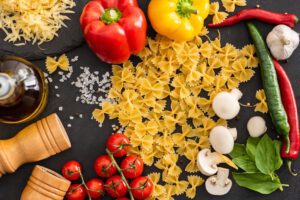
Pasta Primavera: Spring on a Plate
Last but definitely not least, we have Pasta Primavera, which means ‘Spring Pasta.‘ It’s a riot of colors with fresh veggies like bell peppers, tomatoes, peas, and zucchini, all tossed with pasta and a light sauce.
Despite its Italian name, Pasta Primavera was actually born in New York City in the 1970s. Don’t worry! This dish is the creation of an Italian-born New York restaurant owner!
Whether from here or from there, this dish embodies the Italian philosophy of using fresh, quality ingredients. It’s a fantastic vegetarian dish that can easily be made vegan by skipping the cheese or opting for a plant-based alternative.
So, there you have it, folks. Italian menus have something for everyone, from hearty soups to vibrant veggie dishes and simple yet flavorful starters. These dishes, steeped in history and tradition, show just how versatile and adaptable Italian cooking can be. So, whether you’re vegan, vegetarian, or just love good food, dig in and enjoy the magic of Italian cuisine.
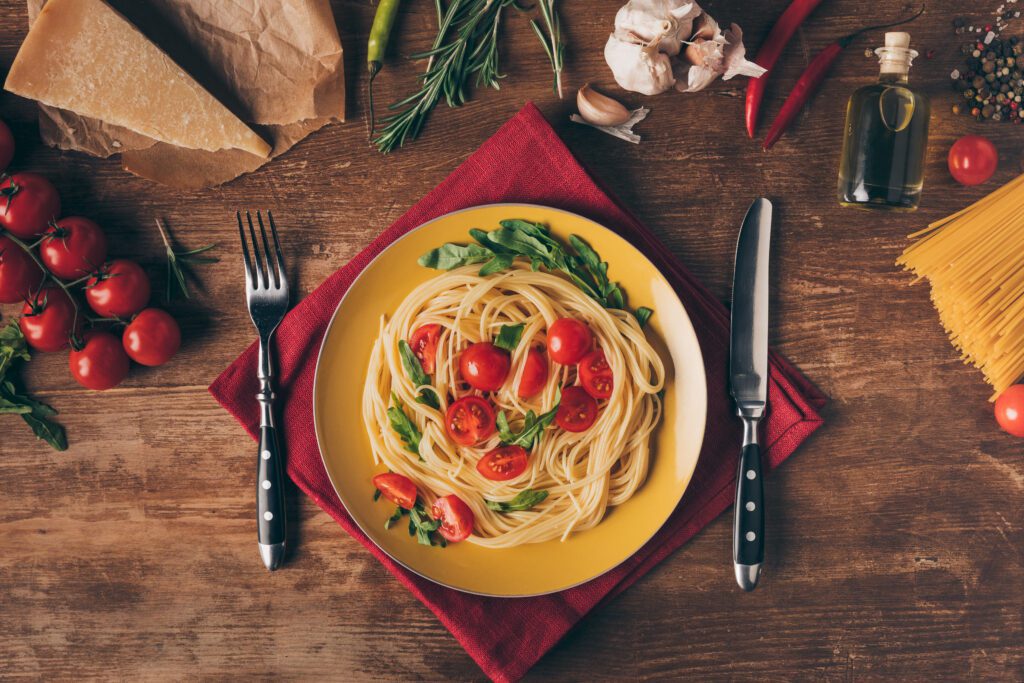
Section 4: Twistin’ the Classics – Vegan and Vegetarian Italian Dishes
So, you’re a fan of Italian meals, but you’ve jumped on the vegan or vegetarian train. Now you’re wondering, “Can I still enjoy my favorite Italian dishes?”
Well, my friend, I’m here to tell you you can! With a dash of creativity and a sprinkle of fun, you can still savor the deliciousness of Italian favorites. Let’s dive in and explore how to give traditional Italian classics a veggie twist.

Vegan Lasagna – The Comfort Food King
Think of lasagna as your favorite cozy blanket – warm, comforting, and oh-so-satisfying. But did you know this classic dish can be whipped up vegan style?
First off, swap out the meaty sauce for a rich lentil or mushroom Bolognese. These guys bring the hearty texture and deep flavor we all love to lasagna.
Next up, the cheese. Whip up a vegan bechamel sauce using plant-based milk and nutritional yeast for that cheesy hit. Or, grab some store-bought vegan cheese. And don’t forget to check those lasagna sheets are egg-free!
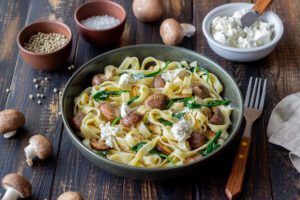
Vegetarian Carbonara – Creamy Pasta Heaven
Carbonara is like a creamy dream, traditionally made with eggs, cheese, pancetta, and a pinch of pepper. But who says vegetarians can’t join the party?
Swap out the pancetta for smoky roasted mushrooms or sun-dried tomatoes. They’ll add a depth of flavor that goes hand in hand with that creamy sauce. Or go for a vegetarian bacon substitute to keep things simple.
Now, the sauce. It’s the heart and soul of carbonara. For vegetarians, good old Parmesan works great. For vegans, mix up some silken tofu and nutritional yeast for a creamy, savory sauce that’ll make you forget about the original.
Tips and Tricks for Twisting Those Classics
When it comes to giving traditional Italian dishes a veggie makeover, here are some handy tips:
- Play around with plant-based proteins: Lentils, beans, tofu, tempeh, and seitan can step in for meat without losing out on flavor or texture.
- Go for umami-rich ingredients: Mushrooms, tomatoes, olives, and nutritional yeast can add that savory punch to vegan and vegetarian dishes.
- Don’t skimp on herbs and spices: Herbs and spices fresh from the local grocer (or your garden!) can take your dishes from “meh” to “oh yeah!”
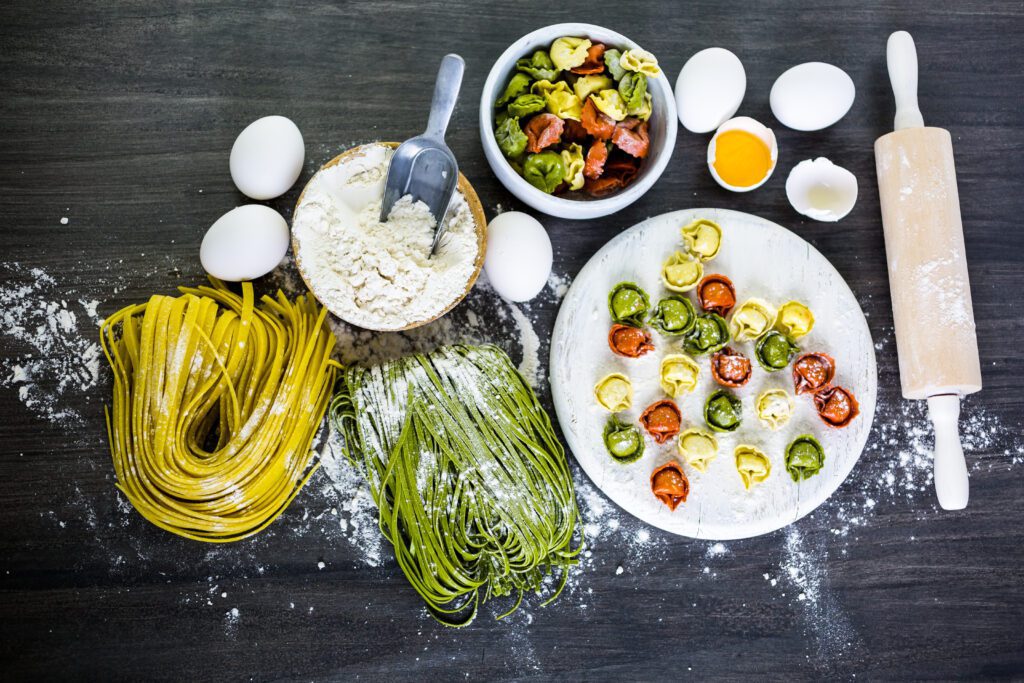
Section 5: The Italian Veggie Kitchen – Your DIY Guide to Vegetarian Italian Recipes
Alright, my veggie-loving friends, it’s time to roll up those sleeves and dive into the world of homemade vegetarian and vegan Italian recipes. Trust me, it’s easier than you might think. You can whip up restaurant-quality Italian dishes in your kitchen with a few pantry staples and some fresh ingredients. Let’s get cookin’!

Recipe 1: Vegan Minestrone – A Vegan Italian Hug in a Bowl
First up, we have the classic Minestrone soup. This baby is like a warm hug on a cold day. It’s packed with fresh veggies, pasta, and a rich tomato sauce that’ll take you back for seconds.
Ingredients:
- Olive oil, onions, carrots, celery, garlic (your flavor base)
- Zucchini, green beans, seasonal veggie favorites
- Vegetable broth, diced tomatoes (for that rich, hearty soupiness)
- Kidney beans, small pasta (to give it some oomph)
- Salt, pepper, and basil
Instructions:
- Heat oil in a pot (medium heat, folks), toss in your onions, carrots, celery, and garlic. Sauté until tender.
- Add zucchini, green beans, and any other seasonal veggies. Cook ’em for a few minutes.
- Pour in vegetable broth and diced tomatoes. Let it bubble away.
- Stir in kidney beans and pasta. Reduce heat and let it simmer till the pasta is cooked.
- Season with salt and pepper to taste. Serve hot with a sprinkle of chopped basil.

Recipe 2: Vegetarian Pasta Primavera – Taste the Rainbow
Next, we have the vibrant Pasta Primavera. This dish is like a party on your plate, with colorful bell peppers, zucchini, carrots, and cherry tomatoes. And let’s not forget the pasta, the heart and soul of many Italian meals.
Ingredients:
- Spaghetti (the guest of honor)
- Olive oil, bell pepper, zucchini, carrot, garlic
- Cherry tomatoes (for a pop of color and flavor)
- Parmesan cheese (optional for vegans but oh-so-delicious)
- Salt, pepper, and basil leaves to taste
Instructions:
- Cook spaghetti as per the package. Drain and set aside.
- Heat olive oil in a skillet. Add bell pepper, zucchini, carrot, and garlic. Sauté till tender.
- Stir in cherry tomatoes. Let them mingle for a couple of minutes.
- Toss in cooked spaghetti. Mix until the pasta is coated with the veggies.
- Sprinkle Parmesan (if using), and season with salt and pepper. Serve hot with fresh, finely chopped basil on top.
So there you have it – two simple, delicious recipes that prove vegetarian and vegan Italian recipes are anything but boring.

Conclusion
Pasta slathered in homemade marinara sauce and dairy-free cheese with vegan meatballs, roasted butternut squash tossed with herbs, and vegan mushroom pasta that’ll have you saying “Mamma Mia!” in no time.
The best part? These Italian classic dishes can be whipped up in your own kitchen in no time! You only need a handful of pantry staples like extra virgin olive oil, a few fresh ingredients, and a sprinkle of love.
So, whether you’re a seasoned vegan chef or a curious newbie, there’s an Italian vegetarian recipe with your name on it. And remember, these dishes aren’t just delicious – they can be made gluten-free or dairy-free, too. So they’re perfect for meal prep or a family dinner where you have to cater to different dietary needs.
Sometimes, you just don’t feel like cooking. That’s where Ferlito’s Italian Restaurant in Grosse Pointe comes in. They have a mouthwatering selection of vegetarian and vegan Italian recipes that will hit the spot. And the best part? It’s a family-friendly environment, so you can bring the whole gang along and even enjoy a drink or two!
So why not give it a whirl? Try a new recipe, experiment with different ingredients, or visit your local vegan Italian eatery. There’s a world of flavor out there waiting for you. And remember, the journey toward embracing vegan and vegetarian Italian meals is all about exploration, creativity, and, most importantly, enjoyment.
So go forth and feast! Buon appetito!
